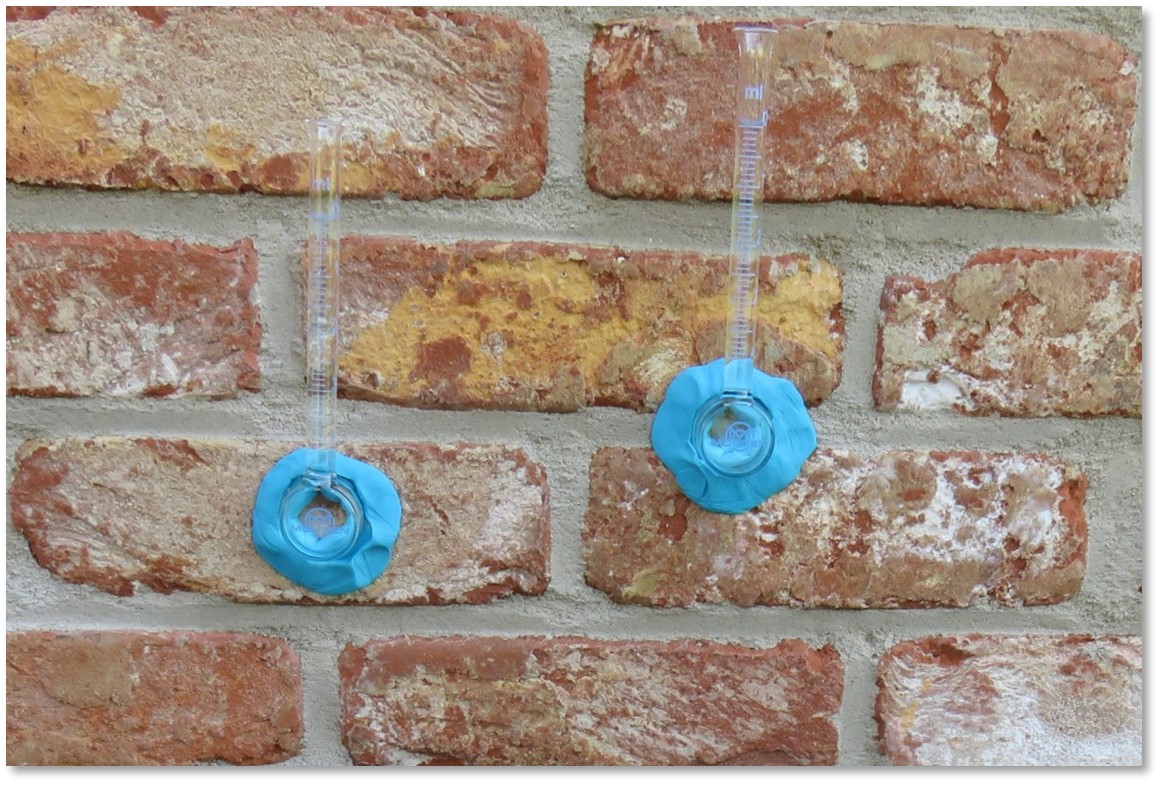Karsten tube test
Karsten tube test for water absorption

What does the Karsten tube test contain?
The Karsten tube test is a commonly used test to measure the water absorption of façade materials like masonry or natural stone. However, this test is not a standardized or regulated test by international norms like ISO or EN-norms, but is commonly recognized and applied in practice.
The Karsten tube test measures the quantity of water which is absorbed by a façade material in a certain amount of time. The test works like this:
- A certain glass tube with scale division (in ml) is secured on a façade using a kneadable kit, so the water only can be absorbed by the façade.
- The tube is filled with a certain amount of water. The time it takes to absorb this water, is measured. Usually the test is executed over a period of 5 minutes to an hour.
- The result is expressed in millimeters per square meter per hour (ml/m²/h) or in ml per time unit.
Although the Karten tube test is not specifically included in the European norms (like the NEN-EN), this test can still be used as a supportive test in context of the assessment of the water absorption of facades. There are other norms that describe more standardized methods for determining water absorption like:
- NEN-EN 1062-3:2008 – paint and varnishes – paint and paint systems for outside walls and concrete – Part 3: determining and classification of permeability (quantity water that seeps through a material)
- NEN-EN 772-21 – Methods for testing masonry – determining the water absorption by capillarity.
These norms describe standardized laboratory test to determine the capillary water absorption, but the Karsten tube test usually is done in practice and is more an indicative test then a standardized laboratory measurement.
Hydrophobing is a treatment where a water repellent substance is applied on a façade to reduce the water absorption. After hydrophobing, according to the code of practice, the water absorption of the façade must be significantly reduced.
General guidelines for water absorption after hydrophobing are:
- Maximally 0,1 to 0,2 liter/m²/hour for the Karsten tube test.
- The exact allowed absorption level can vary depending on the specific requirements of the project, the condition of the façade and the local guidelines or prescriptions.
It is important to notice that the effectiveness of hydrophobing is dependent of the used product, application and the condition of the façade.
If you need more detailed guidelines, it is advisable to get more advice from a specialist.


